Get the latest news, application notes, and upcoming webinars from XGen Bio Inc.
- About
- About XGen
- Our team
- Follow Us
- Youtube

CONTACT US
Copyright© 2025, Xgen. All rights Reserved.
Terms & Conditions | Privacy Policy | Cookie Policy
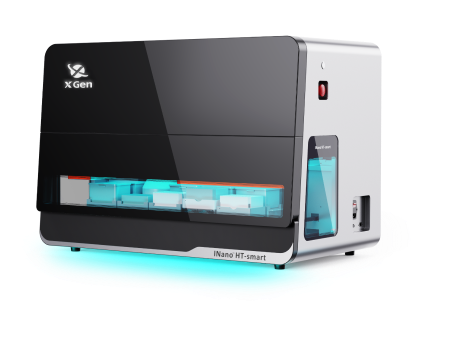
INano™ HT-Smart
End-to-End High-Throughput mRNA/LNP Screening Workstation
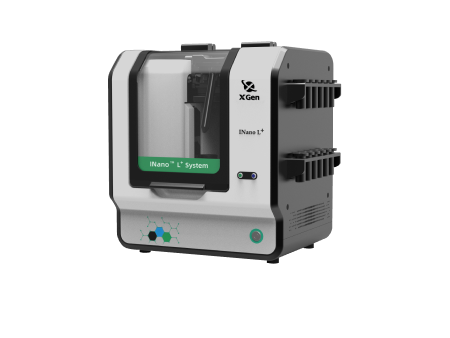
INano™ L+
Rapid Nanomedicine Preparation System
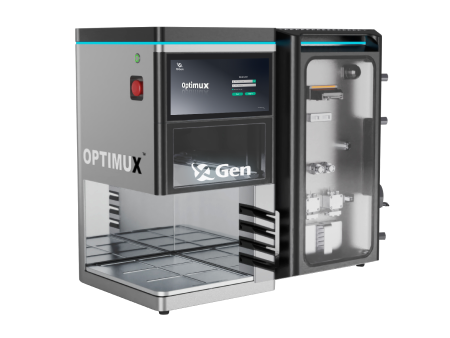
INano™ Optimux
Medium-Scale Formulation (Reusable System & GMP Compliant)
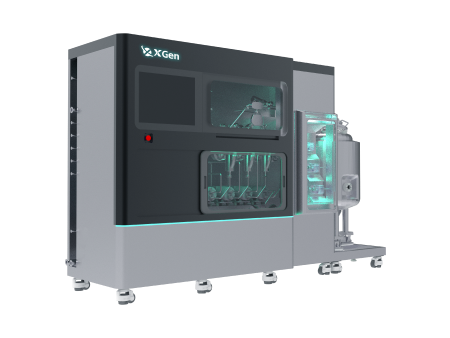
INano™ S
Commercial LNP Manufacturing System

XNano™ PCV
LNP Manufacturing System For Emerging Applications
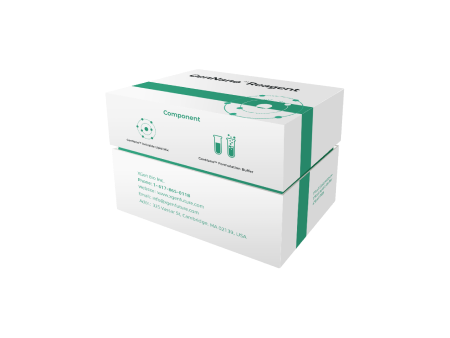
mRNA-LNP kit
Cell Transfection Kit
Application Kit
Organ-specific Targeting Kit
Validation Kit
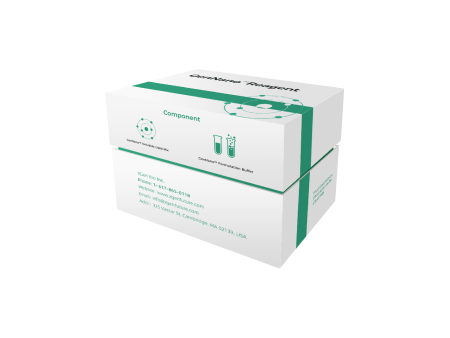
DNA/Protein-LNP Kit
DNA-LNP Kit
Protein-LNP Kit
Messenger RNA lipid-nanoparticle-based therapies hold great potential for treating liver diseases caused by genetic mutations, chronic infections, drug and alcohol abuse, and severe injury, which collectively account for over 2 million deaths worldwide each year. Liver genetic metabolic disorders are particularly well-suited for mRNA-based protein replacement therapy and gene editing. However, widely used PEGylated drugs and lipid nanoparticles (LNPs) can induce anti-PEG (anti-polyethylene glycol) antibodies (APAs), which hinder therapeutic efficacy upon repeated administration.To address this challenge, researchers have designed, synthesized, and optimized a series of polymeric lipids as alternatives to the commonly used 1,2-dimyristoyl-rac-glycerol-3-methoxypolyethylene glycol-2000 (DMG-PEG2000). The goal is to reduce APA reactivity and enhance the efficacy of repeated dosing.
1. Chemical Design and SynthesisResearchers synthesized brush-shaped poly(ethylene glycol) methyl ether methacrylate (PEGMA) lipids (BPLs) with high-density brush-like structures using atom transfer radical polymerization (ATRP) technology. The parameters of these polymeric lipids, including side chain length, degree of polymerization, anchor chain length, and surface architecture, were tuned to modulate the binding affinity of anti-PEG antibodies and control the pharmacokinetics of LNPs in circulation.Compared to the widely used DMG-PEG2000, LNPs incorporating brush-shaped polymeric lipids demonstrated superior therapeutic efficacy in protein replacement therapy and genome editing models, providing new insights into the structure-activity relationship of PEG lipid alternatives. Specifically, researchers first synthesized DMG-PEGxMA species with varying side chain lengths (x = 1, 2, 3, 5, 9, 19), all sharing the same lipid initiator (DMG) and similar degrees of polymerization but differing in side chain length.Dynamic light scattering (DLS) measurements revealed that as the side chain length increased, LNP size gradually decreased and then stabilized. When the side chain length reached 5, the LNPs exhibited a sharp size reduction, stabilizing at approximately 120 nm, which is comparable to DMG-PEG2000 and suitable for in vivo studies. Cryogenic transmission electron microscopy (cryo-TEM) images showed that BPL LNPs had a structural resemblance to DMG-PEG2000 LNPs, indicating good stability, high mRNA encapsulation efficiency (>90%), and low cytotoxicity.
2. Results and Analysis2.1 Effect of Polymeric Chemical Structure on mRNA Delivery Efficiency To determine whether synthetic polymers with alternative chemical structures and physical properties could serve as substitutes for DMG-PEG2000 in LNPs, researchers designed a series of polymeric lipids with varying chemical architectures. In both in vitro and in vivo experiments, most polymer-stabilized LNPs were capable of delivering mRNA, albeit with differing efficiencies. In vivo delivery studies revealed that only approximately 40% of LNP formulations achieved effective mRNA delivery. Further investigation indicated that BPL LNPs with longer side chains, such as DMG-PEG19MA36, exhibited the highest in vivo mRNA delivery efficiency. This enhanced performance is likely attributed to improved aqueous solubility and stability provided by the longer side chains, which facilitate LNP formation and mRNA encapsulation. Specifically, DMG-PEG19MA36 BPL LNPs generated the highest fluorescence signal and human erythropoietin (hEPO) levels in the mouse liver, demonstrating their superior mRNA delivery capability.
Figure 1. Synthetic Polymer-Lipid Hybrid Nanoparticles Enable Efficient mRNA Delivery
2.2 Relationship Between Polymer Structure and mRNA Delivery Efficiency By precisely controlling the polymer architecture, researchers investigated the effects of side chain length, degree of polymerization, and anchor chain length on mRNA delivery efficiency. The results indicated that increasing the side chain length facilitated LNP formation and stability, while also leading to a reduction in LNP size, which eventually stabilized. An increase in the degree of polymerization also enhanced mRNA delivery efficiency; however, excessively high polymerization degrees could hinder cellular uptake and mRNA release. Anchor chain length was found to play a critical role in LNP stability and mRNA delivery efficiency. Medium-length anchor chains (e.g., n = 10, 12) provided optimal hydrophobic interactions, promoting LNP stability and efficient mRNA delivery. Specifically, studies on the polymerization degree of DMG-PEG19MAy (y = 5, 10, 21, 36, 60, 77) revealed that mRNA delivery efficiency initially increased with polymerization degree but then declined, reaching its peak at a polymerization degree of 36. This suggests an optimal polymerization degree range that balances stability and delivery efficiency while avoiding excessive inhibition of cellular uptake and mRNA release.
Figure 2: Regulation of Polymer Structure via Synthetic Chemistry and Its Impact on mRNA Delivery Efficiency
2.3 BPL LNPs Reduce APA Binding and Prolong Blood Circulation Time All BPL LNPs exhibited reduced protein adsorption compared to DMG-PEG2000 LNPs, which can be attributed to their brush-like structure that leads to prolonged blood circulation time. Pharmacokinetic studies revealed that BPL LNPs had a longer circulation half-life than linear DMG-PEG2000 LNPs, with circulation time further increasing as side chain length increased. However, an excessive degree of polymerization led to a reduction in circulation time, likely due to a transition from a mushroom-like to a brush-like conformation. Additionally, anchor chain length influenced protein-mediated clearance, with longer anchor chains prolonging LNP circulation time. Specifically, the Flory radius (RF) measurements of BPL LNPs indicated that their side chains maintained a brush-like configuration, whereas the RF values of the polymer backbone transitioned from a mushroom-like to a brush-like state as polymerization degree increased. This structural shift affected protein adsorption and antibody-binding affinity on the LNP surface, ultimately influencing blood circulation time and immunogenicity.
Figure 3: Regulation of Pharmacokinetic Properties and APA Binding by Polymerization Parameters and Polymer Conformation
2.4 Performance of BPL LNPs in Repeated Dosing Regimens To evaluate the impact of polymer-lipid architecture and surface structure on the efficacy of repeated dosing, researchers conducted a repeated administration study. The results demonstrated that, compared to DMG-PEG2000 LNPs, BPL LNPs maintained a more stable mRNA delivery efficiency after multiple doses. Structure-activity relationship studies revealed that side-chain length, degree of polymerization, and anchor chain length all influence repeated dosing efficacy. Specifically, BPL LNPs with longer side chains exhibited a smaller decline in delivery efficiency after repeated administration, whereas those with a higher degree of polymerization showed a greater reduction in efficiency. The effect of anchor chain length on repeated dosing efficacy was minimal, likely due to similar polymerization degrees and side-chain lengths among different anchor chain variants. Further experiments indicated that, following repeated administration, serum levels of anti-PEG IgG and IgM in mice treated with BPL LNPs were significantly lower than those in the DMG-PEG2000 LNPs group. This suggests that BPL LNPs can effectively mitigate immune responses, thereby sustaining their delivery efficiency.
Figure 4. In the study of repeated dosing regimens, BPL LNPs exhibited significantly superior performance compared to DMG-PEG2000 LNPs.
2.5 BPL LNPs Overcome APA Inhibitory Effects To further validate whether BPL LNPs can maintain efficacy in the presence of anti-PEG antibodies (APA), researchers conducted a rechallenge experiment. Mice were first injected with DMG-PEG2000 LNPs to induce APA production, followed by a second injection of either BPL LNPs or DMG-PEG2000 LNPs after 30 days. The results showed that BPL LNPs prolonged blood circulation time, reduced APA levels, and exhibited higher mRNA delivery efficiency upon the second administration. Notably, certain BPL LNPs, such as DMG-PEG19MA36 and DPG-PEG19MA36, demonstrated superior mRNA delivery efficiency compared to DMG-PEG2000 LNPs after the second dose, indicating their ability to effectively overcome APA-mediated inhibition. Specifically, in mice treated with DMG-PEG19MA36 and DPG-PEG19MA36 BPL LNPs, fluorescence signals and hEPO levels in the liver were significantly higher than those in the DMG-PEG2000 LNPs group after the second administration, highlighting their substantial advantage in mitigating APA-induced suppression.
Figure 5. BPL LNPs effectively overcome the APA inhibitory effects induced by DMG-PEG2000 LNPs.
3. Protein Replacement Therapy and Genome Editing 3.1 Application of BPL LNPs in Protein Replacement Therapy Researchers utilized a Fah gene knockout (FAH−/−) mouse model to compare the efficacy of BPL LNPs and DMG-PEG2000 LNPs in mRNA-based protein replacement therapy. The mRNA delivery capabilities of both BPL LNPs and DMG-PEG2000 LNPs were evaluated in vitro and in vivo, demonstrating effective FAH protein expression in both cases. To simulate a clinical scenario, FAH−/− mice were pre-injected with DMG-PEG2000 LNPs 30 days before the initiation of protein replacement therapy to induce anti-PEG antibodies (APA). Mice then received LNP treatment every three days for 33 days. The results showed that mice treated with DMG-PEG19MA36 BPL LNPs had a significantly higher survival rate and markedly increased FAH protein expression compared to those treated with DMG-PEG2000 LNPs. Furthermore, the BPL LNP treatment group exhibited a significant reduction in bilirubin levels, indicating superior liver function improvement. Specifically, at the end of the treatment, 100% of the mice treated with DMG-PEG19MA36 BPL LNPs survived at the study endpoint, whereas only 37.5% of those treated with DMG-PEG2000 LNPs survived. Western blot analysis confirmed that FAH protein expression levels were significantly higher in the DMG-PEG19MA36 and DPG-PEG19MA36 BPL LNP treatment groups compared to the DMG-PEG2000 LNP treatment group, highlighting the superiority of BPL LNPs in protein replacement therapy.
3.2 Application of BPL LNPs in Genome Editing Researchers further investigated the delivery capability of BPL LNPs by targeting the PCSK9 gene, which plays a crucial role in blood cholesterol regulation. The results indicated that DMG-PEG19MA36 and DPG-PEG19MA36 BPL LNPs induced significantly higher insertion and deletion (indels) efficiency in the liver, whereas DMG-PEG2000 LNPs exhibited lower efficiency. Next-generation sequencing revealed that the indels efficiency in the BPL LNP treatment group was three times higher than that in the DMG-PEG2000 LNP treatment group. Moreover, PCSK9 protein levels in both the liver and serum were significantly reduced in the BPL LNPs (approximately 100% in the liver and 70% in the serum), whereas DMG-PEG2000 LNPs only exhibited a 60% reduction in the liver and a 40% reduction in the serum. These findings demonstrate that BPL LNPs offer higher efficiency and greater therapeutic potential for in vivo genome editing.
Figure 6. BPL LNPs exhibit superior therapeutic efficacy in protein replacement therapy and genome editing applications.
4. Conclusion and Future Perspectives This study demonstrates that chemical structure and architecture of polymer lipids govern the nano-bio interface, providing new insights into the development of novel polymers with anti-fouling properties, improved extrahepatic delivery capabilities, and optimized LNP formulations. Expanding the chemical structures of anti-fouling polymers will further enhance the understanding of LNP-related immune responses and disease-specific cellular effects. The researchers anticipate that the reported multifunctional polymer lipids will support robust and sustained repeated dosing regimens and may find meaningful applications across various therapeutic areas. Future research will focus on further optimizing the chemical structure and architecture of polymer lipids to improve their efficacy and safety across different disease models. Additionally, researchers will explore the potential applications of BPL LNPs in other disease treatments, such as cancer and neurodegenerative diseases, providing novel therapeutic strategies and approaches for these conditions.
References:Xiao Y, Lian X, Sun Y, Sung YC, Vaidya A, Chen Z, Gupta A, Chatterjee S, Zheng L, Guerrero E, Wang X, Farbiak L, Yang Y, Diamond MI, Leal C, McDonald JG, Siegwart DJ. High-density brush-shaped polymer lipids reduce anti-PEG antibody binding for repeated administration of mRNA therapeutics. Nat Mater. 2025 Feb 28. doi: 10.1038/s41563-024-02116-3. Epub ahead of print. PMID: 40021827.
|